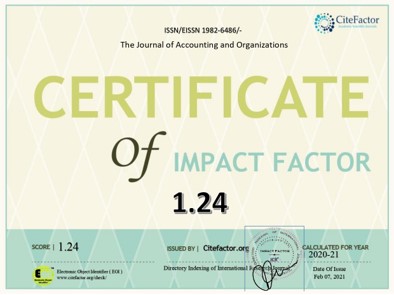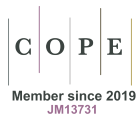Teaching cases
Specific rules for submission
General conditions:
Before submitting manuscripts for evaluation, authors must be aware of, and confirm that:
- The concepts, opinions and ideas published in the papers are the sole and entire responsibility of their author(s).
- Manuscripts submitted to RCO are unpublished. Papers published in the proceedings of scientific meetings such as congresses, seminars, symposia, etc. are considered unpublished.
- Manuscripts are not being evaluated in any other publication vehicle throughout the evaluation process.
- Maximum number of authors per article: 4. Duly justified exceptional cases may be analyzed by the RCO Executive Committee.
- Anonymity of authors in all documents submitted.
- After approval for publication, the authors undertake to send the article in two versions, one in Portuguese and one in English.
Preparing for submission:
- The teaching case will only be submitted using the electronic form available on the journal's website (http://revistas.usp.br/rco).
- Authors must fill in their details correctly in the submission system, as this information is indispensable at the time of publication.
- Non-compliant or incomplete submissions will be returned to the authors.
- Direct, concrete, objective style. Avoid using acronyms in the text and tables.
- Readers should easily understand what is being discussed.
The submission of a manuscript includes:
1) A letter to the editor.
2) Full details (telephone numbers and address), institutional affiliation and ORCID iD registration number, registered on the website.
3) The main manuscript in editable format, with an abstract in Portuguese and English.
4) Supplementary documents, if necessary.
Cases and other documents should only be submitted using the electronic form available on the journal's website (http://revistas.usp.br/rco), in accordance with the following rules:
- The accepted text editor is Word 6.0 or higher;
- Font: Times New Roman, size 12;
- Single line spacing;
- Justified alignment;
- Margins: top and left - 3 cm, bottom and right - 2 cm;
- Number of words, including title, abstract, text, references and illustrations: between 4,000 and 6,000 words, not including the bibliographical references listed.
Teaching cases have an educational objective, oriented towards learning and the development of specific competencies in a given discipline. Teaching and learning with cases requires them to be well-written and capable of getting students to take on the role of analysts and protagonists in a quality narrative.
In this sense, we suggest that the teaching cases to be submitted follow the structure proposed by Alberton & Silva (2018); and adapted by Silva & Bandeira-de-Melo (2021):
Introduction - Delimit the time and place in which the case takes place, as well as characterizing the protagonists and introducing the dilemma, which will be covered in detail in subsequent sections and recalled at the close of the case.
Context of the case - Present the context and the agents involved in the specific situation, linked to the topic addressed in the case, with an indication of objective facts covering a situation. The context of the case can be described in several sections, the titles of which are defined by the authors according to their objectives and creativity.
Case dilemma - It is recommended to present more specific information to prompt the reader to reflect on the decision involved.
Closing the Case - This comprises one or two final paragraphs in which the author sets out some guidelines on the dilemma of the case, announcing its closure and the decisions that need to be made. It can include some more reflective questions that clearly delimit the scope of the case and will support the construction of the questions indicated in the teaching notes.
Annexes and/or Appendices - if any.
Teaching Notes - Aimed at guiding the teacher in solving the case in the classroom, they can include the following items: (a) source of data; (b) didactic or educational objectives; (c) questions for discussion, with the respective analysis/discussion; (d) suggestion of a teaching plan; (e) literature review, presenting the main theoretical perspectives that underpin the case and will support its analysis and direct paths of action in the discussion of the questions; (f) discussion or analysis of the case; (g) references.
Teaching notes are not made public. If you would like access to them, please contact the journal by e-mail: rco@usp.br
References
Alberton, A., & Silva, A. B. da. (2018). Como escrever um bom caso para ensino? Reflexões sobre o método. Revista de Administração Contemporânea, 22(5), 745-761. https://doi.org/10.1590/1982-7849rac2018180212
Silva, A. B. da, & Bandeira-De-Mello, R. (2021). Aprendendo em ação: utilização de casos para inovação no ensino e aprendizagem. Editora UFPB. Available in: http://www.editora.ufpb.br/sistema/press5/index.php/UFPB/catalog/view/680/961/8722-1







